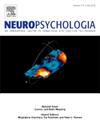The sacrifice of alerting in active short video users: Evidence from executive control and default mode network functional connectivity
IF 2
3区 心理学
Q3 BEHAVIORAL SCIENCES
引用次数: 0
Abstract
Human attention is a limited resource increasingly taxed by continuous, socially embedded media streams, but how habitual short-video use shapes core attentional operations and their neural substrates remains unclear. Here we distinguish active from passive short video usage and examine whether they differentially relate to the alerting, orienting, and executive components of attention and to large-scale resting-state network connectivity. Our results demonstrate that frequent active short video usage predicts reduced alerting efficiency and the functional connectivity between right ventral prefrontal cortex (PFCv) and right posterior cingulate cortex (PCC) mediates this association, attenuating the direct effect and implicating interactions between default mode network (DMN) and control network. While orienting exhibits a modest interaction among different usages in which higher passive usage confers greater orienting only among low-active users, and executive control shows no reliable association. These findings extend resource-control accounts of attention to the short-video context by identifying a specific, right-lateralized coupling between brain networks that links active usage to diminished alerting. Mechanistically, we identify a right-lateralized default-control coupling that mediates the link between active short video usage and reduced alerting, isolating a modifiable resting-state pathway. These results provide actionable metrics for intervention and platform design to mitigate attentional costs in high-exposure users, informing evidence-based guidance for education and policy.
主动短视频用户的报警牺牲:来自执行控制和默认模式网络功能连接的证据。
人类的注意力是一种有限的资源,不断被社会嵌入的媒体流所消耗,但习惯性的短视频使用如何塑造核心注意力操作及其神经基质仍不清楚。在这里,我们区分了主动和被动的短视频使用,并研究了它们是否与注意力的警报、定向和执行部分以及大规模静息状态网络连接有不同的关系。我们的研究结果表明,频繁的活跃短视频使用预示着警觉性效率的降低,而右侧腹侧前额叶皮层(PFCv)和右侧后扣带皮层(PCC)之间的功能连接介导了这种关联,减弱了直接效应,并暗示了默认模式网络(DMN)和控制网络之间的相互作用。而定向在不同用法之间表现出适度的相互作用,其中较高的被动用法仅在低活跃用户中赋予较大的定向,而执行控制没有显示可靠的关联。这些发现通过识别大脑网络之间特定的、右旋的耦合,将注意力的资源控制解释扩展到短视频环境中,该网络将积极使用与减少警觉性联系起来。在机制上,我们确定了一种右侧化的默认控制耦合,它调解了主动短视频使用和减少警报之间的联系,隔离了一个可修改的休息状态途径。这些结果为干预和平台设计提供了可操作的指标,以减轻高曝光用户的注意力成本,为教育和政策提供基于证据的指导。
本文章由计算机程序翻译,如有差异,请以英文原文为准。
求助全文
约1分钟内获得全文
求助全文
来源期刊

Neuropsychologia
医学-行为科学
CiteScore
5.10
自引率
3.80%
发文量
228
审稿时长
4 months
期刊介绍:
Neuropsychologia is an international interdisciplinary journal devoted to experimental and theoretical contributions that advance understanding of human cognition and behavior from a neuroscience perspective. The journal will consider for publication studies that link brain function with cognitive processes, including attention and awareness, action and motor control, executive functions and cognitive control, memory, language, and emotion and social cognition.
 求助内容:
求助内容: 应助结果提醒方式:
应助结果提醒方式:


